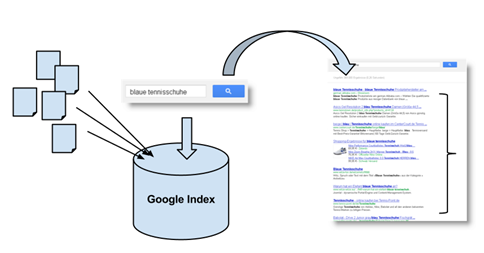Erik Qualman's Blog, page 534
June 29, 2015
Google Search Hurting Yelp, Finds Study Funded by Yelp

Newsweek – Google manipulates search results to promote its own search services over its rivals’, suggests a new study published on Monday. The authors say the tactic is both a violation of antitrust laws and harmful to Internet users, hindering their ability to find information.
The study was funded by competitor Yelp, known for local business reviews, which has filed a complaint against Google with European Union antitrust authorities for skewing results. The authors—Michael Luca of Harvard Business School and Tim Wu of Columbia Law School—also have a history with the company. In 2013, Wu defended the Federal Trade Commission’s (FTC) decision to settle with Google over search bias allegations, citing its superior product.
Wu’s stance has since evolved, thanks to a little experiment. Yelp built a browser plug-in meant to re-create Google searches, but without the automatic listing and map pairing first introduced in 2009. A survey of 2,690 participants showed that users were 45 percent more likely to click on results ranked purely by relevance, compared with Google’s current system. Wu says the results show that Google is not providing the best possible results.
“This suggests that by leveraging dominance in search to promote its internal content, Google is reducing social welfare—leaving consumers with lower quality results and worse matches,” the study says.
“When the facts change, your thinking should change,” Wu told Re/code. “The main surprising and shocking realization is that Google is not presenting its best product. In fact, it’s presenting a version of the product that’s degraded and intentionally worse for consumers.”
Concerning the current case against Google in the EU, an official at a European antitrust authority told The Wall Street Journal that regulators will be thrilled to have additional evidence. The charges could potentially lead to fines totaling billions of euros, as well as Google having to change the way it conducts business.
While Wu isn’t calling for an FTC case against Google, he told Re/code there is evidence for one. “The door is open,” he said.
Article by Lauren Walker for Newsweek
Thumbnail from Shutterstock
[image error]
7 More Ideas to Boost Facebook Newsfeed Visibility

Socialnomics authors have written several times before about the best ways to engage Facebook users. If those ways have worked for you, and you’re looking for more creative approaches to do the same, here’s some more things you can try.
1. Post at a Time When People Are Most Likely to Engage With You
According to QuickSprout, Thursday and Friday are the best days to post on Facebook. The answer might be different in your case, but in general, it’s a good idea to update your page when people are in the mood to relax via social media.
2. Be More Personable
Sure, Facebook users like to consume information; but they also like to feel as though they’re in a conversation with an interesting, authentic brand. If you talk to your audience as though they’re a single person, your conversational-yet-authoritative voice will shine through, and you’ll be able to engage people.
3. Share Articles From Sources Other Than Your Blog
There’s nothing wrong with updates about your latest blog posts. However, you’ll better serve your audience if you post about content from other, authoritative sources too, like what Vegas Dream Homes did with Bright Nest. Just don’t post anything from a competitor!
Out of blog post ideas? Repurpose your old posts into new forms of content. Turn them into infographics and videos for visual learners, podcasts for auditory learners or games for kinesthetic learners. You can also update your old posts, if applicable, and share them again as though they’re brand new.
5. Use Pop Culture References in Your Image Captions
Pick the ones that your target audience is most likely to get. For example, if the latest Spiderman movie is showing in theaters at the moment, you can use a caption like “Bet Spiderman would love this!” Try not to be too obscure with your references, though; otherwise, it will just fly over your audience’s heads, and all that effort to look clever will be for nothing.
6. Prepare a Creative Holiday Greeting
Remember to greet your Facebook audience on special days, like New Year’s Eve, Christmas, Hanukkah, Fourth of July, etc. You can top it off with an eye-catching card or a promo, whichever is more appropriate.
7. Name-Drop a Famous Person Who Endorses Your Brand
Celebrity endorsements only happen once in a blue moon, so when they do, don’t hesitate to take advantage of them. As soon as you spot an article on how much a famous person loves your brand, share it with your followers. If the celebrity in question has a good reputation, that might rub off on your product.
On an ever-changing platform like Facebook, more creative approaches to marketing are necessary. Experiment with these approaches one at a time, see which ones resonate with your target audience, and make the most of them.
[image error]
Uber France Leaders Arrested For Running Illegal Taxi Company

TechCrunch – Uber France CEO Thibaud Simphal and Uber Europe GM Pierre-Dimitri Gore-Coty were both taken into custody today in Paris. The AFP first broke the news. The police started investigating Uber in November 2014 and raided its office in Paris in March 2015.
The two executives were charged with two different allegations. First, according to them, Uber is running illegal taxi operations. Uber has been struggling with this charge in many countries, starting with the U.S. In 2010, the company had to change its original namefrom UberCab to Uber as taxi companies didn’t want to create any confusion.
Second, the police said that Uber France is concealing digital documents. It’s hard to tell what the police was looking for when they raided the French office in March. But apparently, some documents are missing and slowing down the investigation.
The transportation company executives weren’t taken into custody because of the violent protests that occurred last Thursday — taxi drivers want Uber to stop its cheapest service, UberPOP. But it’s hard to rule out a link between the two events. The police might have sped up its investigation following last week’s incidents. Cabbies damaged 70 cars — some of them were even flipped over and burnt.
As a reminder UberPOP was launched in February 2014 and is the confusingly named equivalent of UberX in France (UberX in France is the equivalent of Uber in the U.S.). With UberPOP, anyone can become a driver without any special professional license.
Many taxi drivers saw the new service as unfair competition. UberPOP was banned in Brussels, the Netherlands and, yes, France.
The French police has been issuing fines for a few months now, but when an UberPOP driver gets fined, Uber pays for the fine. Recently, Uber rolled out UberPOP in a few smaller French cities, making it available to many more potential customers.
That’s why taxi drivers protested against UberPOP last week, asking for a real unequivocal ban. Interior Minister Bernard Cazeneuve talked with taxi unions, told the police to stop UberPOP drivers and fine them — 200 additional police officers are now in charge of this task. France President François Hollande also reminded that UberPOP cars could get seized by the police, but it’s unclear whether it will become a widespread practice.
Yet, as long as there is no justice court order, the Government can’t do much more than that. On Thursday, Uber France director Thibaud Simphal said to BFM TV that as long as a justice court didn’t order Uber to stop UberPOP, the service would continue — as of today, you can still find UberPOP cars when you open the app.
Update: We’ve reached out to Uber, a spokesperson sent us the following statement:
“Our CEO for France and our General Manager for Western Europe were invited to an interview by the police this afternoon; following this interview, they were taken into custody. We are always available to answer all the questions on our service, and available to the authorities to solve any problem that could come up. Talks are in progress. In the meantime, we keep working in order to make sure that both our customers and drivers are safe following last week’s turmoils.”
Article by Romain Dillet for TechCrunch
Thumbnail from Shutterstock
[image error]
How to Keep Your Website Visitors Happy and Coming Back for More

The best websites keep their visitors coming back for more. It’s how you build up a loyal fan base who’re going to keep checking back to view your content. It’s that simple. Keeping your visitors happy is no easy task, though. Therefore, today I am going to show you how to keep your website visitors happy and coming back for more.
Image via pixabay.com
Immediate Branding
What does it mean when we talk about ‘branding’?
It’s about standing out from the crowd. Making your website memorable. Doing something that no other website can do as well as you. In short, it all starts with the web design.
As soon as visitors enter your website, they should be confronted with a font uniform to your site and a unique logo. This is why companies spend so long trying to figure out what the best logo for them is. It’s also why investing in good design often pays dividends.
Give It Back
SEO is so important for getting people to visit your website again. Sometimes they aren’t going to fall in love with your site the first time, or even get tempted to click it. No, they need to see it more than once.
This is where hiring an SEO company comes in handy. Hire them and they’ll have no problems spotting areas where you can improve, or where you’ve got flaws in your SEO strategy.
The Way You Talk
To put it simply, the way you speak in your content is going to influence how people react to you. It’s easy to go into a formal corporate business tone, but that’s not going to win you any followers. It’s professional yet impersonal.
Every person who visits your site should feel like you’re speaking directly to them. You have to form a deep personal connection with every person you come across. While this is difficult, you can do it simply by altering the pronouns within your web content.
Give Them something
Become known for something. Many sites have managed to do this through regular promotions that are free to enter. This keeps people coming back for more because they want to be in with a chance to win whatever you’re offering, even if it’s something small like a free consultation or a few hours of free coaching.
Of course, it’s not enough to just offer a free promotion. You need to get people to see it. Social media is a crucial tool for the new website. A clever Facebook ad costs a little bit to get up and running, but it’s invaluable when it comes to driving traffic and getting more and more people interested in what you do.
We recommend hiring a Facebook guru to help with this. Social media is the single best low-cost promotion platform available right now.
Customer Service
Loyal fans aren’t created over night. Someone who checks back to your website semi-regularly in order to see what’s going on is different from someone who religiously subscribes to your newsletter and returns on a daily basis.
When you get the chance to speak to individuals directly, grasp it with both hands. Ensure that your customer service skills are top notch by replying to emails promptly and being as polite and helpful as you possibly can.
Long Game
This is a long game. Don’t expect anything to happen overnight. Sites with large groups of fans built them over a long period of time. But you can start seeing results immediately. As long as you’re in this for the long haul, following these tips above will guarantee an improvement in your website’s fortunes.
[image error]
Promote Your Brand the Pinterest Way

Promoting your brand is as easy as putting a pin in it … with Pinterest of course.
Whether you want to put your products in the spotlight or showcase your brand, Pinterest can definitely help.
With “pinteresting” promotions in mind, here are a handful of ways your business can take advantage of Pinterest:
Top Companies on Pinterest
One of the best ways for your business to learn how to promote its brand on Pinterest is by gathering tips from the top companies on the site.
From expert pinning practices to unique boards, there are a number of companies that have taken marketing to a whole new level by using Pinterest.
Among them:
• Etsy – Everyone’s favorite handmade arts and crafts site uses Pinterest every day to put its artisans’ work in the spotlight. To avoid clutter, Etsy separates its boards into over 90 categories including home goods, clothing, and jewelry. Thanks to its marketing dedication, Etsy has well over 400,000 followers on Pinterest.
• Lowes – Home improvement has a huge following on Pinterest, which is why Lowes Home Improvement store is the perfect fit. Lowes pins DIY home improvement ideas based on the season as well as helpful design ideas complete with instructions. With 55 boards, Lowes now has more than 4 million Pinterest followers.
• L.L. Bean – As an early adopter of Pinterest, L.L. Bean has quickly found its place on the photo sharing social site. Not only does the company pin clothing and household goods on Pinterest, it also has boards that feature its products in action, such as the “Outdoor Fun” and “Wedding” boards. L.L. Bean has built Pinterest loyalty to the tune of 6 million followers.
Now that you have an idea of the Pinterest leader board, how can your business use the social site to promote its products?
Create a Presence
There is more to Pinterest than simply signing up for an account and pinning one or two boards.
The article, “5 Tips for using Pinterest to Market Your Message Therapy Business” describes the importance of frequently posting on the site.
Using other sites like Facebook and Twitter can help you attract more followers to your Pinterest boards.
By posting your Pinterest activities to Facebook at least once a week and tweeting your activities two or three times a week, you can create a real following and a real presence in no time.
Use Engaging Photos
Pinterest is a photo-based social site, so it only makes sense to upload interesting and engaging photos to your account.
Don’t just take a picture of one of your products sitting on a tabletop. Instead, take photos of your products in action.
Whether it’s someone running on the beach in one of your bathing suits or wearing your custom made jewelry, the key to marketing on Pinterest is helping users visualize your brand.
Pinning other’s photos is fine too; just make sure they are as visually engaging as yours.
Observe Repins
Finally, Pinterest makes it easy to learn from current and potential customers.
By keeping an eye on repin activity, you can quickly discover your customers’ interests and stay ahead of upcoming trends. Likewise, you can keep an eye on the popularity of your competition’s repins too.
If you need to reboot your brand’s promotional practices, then it’s time to give Pinterest a try.
Photo credit: Shutterstock.com
[image error]
June 26, 2015
Is Artificial Intelligence Something We Humans Should Fear?

TitanbetPoker – Now that there is a computer that can beat humans at Texas Holdem poker, should players fear fraud in casinos or is this mostly a fantasy which has become exaggerated and warped into a kind of urban legend? Steve Ruddock says that there is no reason to fear the computer Cepheus which has in essence already solved the poker game, but is he really right about this? Let’s have a closer look at the field of artificial intelligence, AI, to understand a bit more about it and what we might expect of future computers and robots…
Artificial Intelligence
The term artificial intelligence was coined back in 1956 by researcher John McCarthy during the Dartmouth Conference. It was during this conference that the main mission of AI was outlined. Any computer program that could do something that we would normally considered exclusively human would be considered an AI program. The focus was on the completed result and not so much on the means, meaning the structures and processes leading to successful action do not have to look like the thought processes of a human being. This is still an important point to keep in mind. When speaking about artificial intelligence one could come to the conclusion that it has to function in the very same way that a human being’s intelligence does. However, this has never been the case in the history of the development of AI.
When talking about the field of AI it is important to define just what is meant by intelligence. The definition, according to Stanford University, of the type of intelligence that can be applied to computers is that it is the “computational part of the ability to achieve goals in the world.” Now, these goals can be very diverse. With the poker Cepheus computer the goal is obviously to beat real players by making the correct decisions based on many different factors such as the cards that are dealt. Thus, AI can be summarized as the science of making computer programs that are intelligent. However, it is very important to understand this doesn’t mean that the computers will ever achieve human intelligence. The programming looks in depth at how we humans solve problems and then creates intelligent programs that try to mimic this.
Fears of AI
Which #ArtificialIntelligence Categories Are Seeing the Most Innovation? http://t.co/0UBbS3yb6r pic.twitter.com/RisGguPyg0
— Khalid Hamdan (@KhalidHamdan0) June 14, 2015
There is a lot of talk about AI and also a lot of fear surrounding this subject. The discussion may bring up half-joking fantasies of computers killing humans or at least taking away our jobs. The latter idea is easy for many people to relate to since we’ve already seen how developing technologies are making many previous job assignments unnecessary. So the fears around the smart computers might have some grounds to them. However, the question is whether we are being influenced somewhat by movies like Terminator and other stories from Hollywood where the robots come to life and take over our world. Looking at the current state of AI in different fields this is far from reality. And even if there arerobots that look like humans and that can handle tasks such as the check out in stores these robots are not really like humans and it is hard to believe that they ever will be. So while we might see pretty robots with hundreds of facial expressions dealing the cards at the poker tables it is hard to see that they will eventually make the presence of humans at the table unnecessary.
Until today, no researchers have managed to develop an AI system that reasons just like a human being, although of course, they have been trying to do so. Still one could definitely state that there is much more emphasis on the type of AI that is meant to accomplish tasks and make life for us humans easier. These systems are hardly something to fear since they clearly need human intervention to succeed. It is true that in the process these smart systems terminate certain jobs but at the same time new job opportunities arise so there will still be a need for human manpower despite the robots’ increased abilities.
Getting a Computer to Think for Itself
It might seem impossible to make a computer think for itself. After all, the programmer instructs the computer how to analyze the information it receives. There is a field, though, where scientists are indeed trying to make computers understand and do things without being told so. This field is called genetic programming. This is a method where a population of computer programs is bred in order to better solve problems. The programs are made to transform existing programs into new ones using the Darwinist approach — survival of the fittest — to arrive at the best results. If this sounds a bit confusing, don’t worry. This part of AI is not easy to understand. However, it might come to influence the way we look at computers in the future and make them better at working without our intervention.
Although genetic programming uses terms and expressions from the field of evolution, the programs aren’t actually reproducing themselves. Instead, they are set up to have the ability to select the right program for the problem that needs to be solved. The ability for software to upgrade and select the best possible choice of different options is exactly what is needed to create poker software that can handle more advanced situations where several players are involved in the game and more parameters come into play.
Ruddock Says We Have Nothing to Fear…
In Ruddock’s article we learn that poker players should not fear AI poker. Ruddock means that Cepheus is like Lego Duplo in the world of poker and that it will take an immense amount of time to get anywhere close to Lego or Lego Technic. He admits that Cepheus did beat the poker master Daniel Negreanu in Heads-Up Holdem but he claims that the computer program stands no chance in more complicated situations with several hands and Pot or No Limit rules. His conclusion is that Cepheus can beat bad players but not as fast as a regular good player could. So should we all just relax and forget about AI poker as a concern for fair poker rooms?
Well, Ruddock seem to forget that the majority of players in online poker rooms are indeed very poor players. They don’t necessarily join the big games with many hands. It is exactly this type of player that the computer software knows how to beat and if the software is to be used by poker sites then players will definitely have something to worry about. For a bad player playing against the computer it simply won’t be worth it when the opponent is going to win at all times.
For Learning Purposes
There is however a very important point to Ruddock’s article on AI and poker which has to do with the learning aspect. Cepheus has brought the possibility of making great learning software for players who want to advance faster without losing money on the learning process. Many players are looking for poker schools that let you play over and over again with real situations and scenarios. The advanced computer technique can simulate poker games in a fantastic way, making the practice games exciting and well worth the time spent on them.
As for poker sites using computer software that can outsmart the less skilled players there might be a point to developing certification which assures the players that they are not up against Cepheus but rather regular software where they still have a chance of winning. Perhaps testing facilities like TST (Technical Systems Testing) can incorporate this task of checking whether the poker room is using AI in its poker software or not.
Awareness
There is yet another aspect to consider and that is the awareness of the players themselves. Not many people are aware of the connection between AI and poker and who has actually heard about Cepheus? If people look at AI’s connection to gaming online in the same light as the relationship between online gaming and random number generators popular demand might actually request AI involvement to ensure that the poker games are standardized. Till then, poker rooms can decide to use Cepheus software in games that are mainly used by poor players without ever getting caught. This is an aspect that Ruddock doesn’t bring up in his article. We should all be aware of the fact that AI is something which evolves and that just because the University of Alberta Poker Research Group took well over 20 years to come up with Cepheus it will not necessarily take another 20 to create something even more effective. Ruddock is absolutely right about the fact that the discussion on poker versus AI will continue — and well it should, so that players can become aware of the issue and understand the implications of smart poker software in online poker rooms.
Further reading:
http://www.socialnomics.net/2014/04/01/machine-learning-pioneering-social-media-software-helps-businesses-find-new-customers-in-the-mass-universe-of-tweets/
http://senseis.xmp.net/?LuckInGo
[image error]
Is Your Online Portfolio Social Enough?

If you’re trying to take your online portfolio to new heights, social media can help.
Whether you’re building your portfolio in order to boost your career search or you just want to increase your online presence, social media is a great place to start.
Here are just a few ways social media can help you get your online portfolio on the right track:
Polish Your Work
Before you even begin to think about growing your online portfolio, you must first polish your work.
The word “work” covers anything from your résumé to any tangible items that display your talents.
For example, if you want to change career paths and become an online retailer, then your work would be the merchandise you’re selling and any selling experience you may have.
In other words, make sure what your planning on putting in your portfolio is ready for the online world.
If you have past employment experiences or a collection of experiences that prove you’re ready to up your career game, polish that information and make it ready for online audiences.
An online portfolio can take many shapes and forms.
Business professionals have online portfolios filled with corporate benchmarks whereas creative professionals have portfolios filled with examples of their artistic talents. All of these areas fall under the portfolio umbrella.
Promote Your Professionalism
Once your work is polished, you can set your sights on social media.
As the following article looks at, when it comes to the power and impact of an online portfolio, LinkedIn is a great place to promote your professionalism. Not only does LinkedIn allow users to upload their résumés, it also lets other users endorse one another.
Another great thing about LinkedIn is the fact that having a LinkedIn account is basically like having an online portfolio.
You can post your work experience, career updates, and professional connections via your LinkedIn homepage, which is the perfect starter portfolio.
Promote Your Brand
LinkedIn can help you boost your professional portfolio, but if you want to increase your overall social portfolio, then Facebook and Twitter are the answer.
More and more businesses and professionals are using Facebook and Twitter to promote their brands and stay current.
You can do the same by posting industry topics and tweeting industry related information through your social accounts.
If you’re in search of a new career, then it’s important to know hiring managers are turning to Facebook profiles to get more information on potential candidates.
With that said, keeping your social activities clean and professional is always good practice.
Consider a Portfolio Website
Creating a website that’s dedicated to your continuously progressing portfolio is an effective way to grow your online presence.
With a personal website portfolio, you can create a custom design and layout that puts your skills and accomplishments in the spotlight.
Once you’ve built an amazing website, you can then share your portfolio on Facebook, LinkedIn, or any of the other social avenues out there. By doing so, you can direct traffic to your website portfolio while also growing your social presence.
When you’re ready to increase your presence and career possibilities, keep in mind the online portfolio pointers above.
Photo credit: Image courtesy of Stuart Miles at FreeDigitalPhotos.net
[image error]
Google’s autonomous ‘pod’ cars hit the road

USA TODAY - Attention, people of Mountain View, Calif. Don’t call the police on those pod-like vehicles now roaming your suburban streets. They’re just Google’s autonomous two-person vehicles getting the lay of the land.
After months of fine tuning at Google’s private testing facility in central California, a few of the search company’s bubble-shaped vehicles have started to circulate around the company’s headquarters to further adapt to real world driving scenarios.
The cars represent concrete evidence of Google’s vision for self-driving cars, which amount to fully automated vehicles that can carry two people and a modest amount of groceries or other items. (There is no trunk).
While these polished white prototypes do have rudimentary steering wheels and pedals for the on-board safety driver, the ultimate iteration will demand that occupants fully trust the machine to get them safely to their destination.
Neighbors who wish do more than gawk or yell at these new road warriors can post their comments at a website dedicated to the project.
Google also announced Thursday a competition to paint the cars with creative designs, a more down-home version of BMW’s now-famous 1970s art-car project, where famous artists such as Frank Stella and Andy Warhol used the company’s most iconic racing and production cars as their canvases. Entries for Google’s competition are open to anyone 13 and older, and are due before Aug. 30.
Google has been driving the streets of Mountain View for years now with a fleet of two-dozen Lexus SUVs that are strapped with all manner of radar and Lidar sensors. In total, the cars have logged more than a million miles on city streets, resulting in about a dozen accidents that the company said were, in each case, the fault of other human drivers. Google recently agreed to keep a running web-based tally of any such incidents going forward after it was criticized for not doing so during the past few years.
The Google autonomous car is a significant advancement over the Lexus mules, as much of its sophisticated tech is smoothed into its skin. But its dominant feature — a black bubble on the roof containing scanners that map the world around it in 360-degrees — is the biggest giveaway that this isn’t your father’s automobile.
Self-driving cars are likely to go from sci-fi to reality rather quickly, thanks not just to Google’s long-standing efforts but also to recent commitments to the field from other tech and auto companies. Uber is busy hiring robotics engineers from Carnegie Mellon University, and Ford, announced this week that it was moving its autonomous cars efforts from a research project to a full-fledged engineering division.

Image from Google
Article by Marco della Cava for USA TODAY
[image error]
The Three Pillars of SEO: How Do They Align With Search Engine Processes?

Implementing efficient SEO campaigns requires a very good understanding of the optimization process itself and how search engine processes work.
Google keeps rolling out algorithm updates, adding new web spam filters that eliminate poor-quality websites from the search index and help users find relevant information more easily. But despite these frequent changes, the core SEO success factors have stayed essentially the same over the last years. By learning these core elements, companies can understand how search engines retrieve, index and deliver information, so they can ultimately build strong SEO strategies that bring a huge ROI.
There are two approaches to learning how SEO works that have made themselves stand out over the past few years. The standard way involves finding SEO issues and fixing them, an approach that teaches individuals the basics of SEO, but not the reasons to do it. The other approach focuses on SEO as a form of computer science, and specifically Information Retrieval, or IR, which is what search engines themselves do. However, this approach is far too technical for most of us, and requires many years of intense study and practice before one can use his knowledge.
If you want to flourish in your digital marketing career, you need to understand how SEO works from both points of view – and this is what we will be talking about today.
Understanding the 3 Pillars of SEO
Search engine optimization has three fundamental parts, most commonly referred to as pillars: the Technology pillar, the Relevance pillar, and the Authority pillar.
While technology implies every technical aspect of a website (XML sitemap, URL structure, HTML coding, HTTP status codes), relevance refers to readability, meta tags, headlines, content structure (in essence, everything that makes a website relevant to a search query). Authority is supported on the relevance pillar, and refers to backlinks, citations, social media signals, trustworthiness signals, and other elements that make your website appear as a highly credible source.
1. Technology
The technology pillar ensures that your site is properly structured, and can be correctly crawled and indexed by search engines. Outlined below are the most important technical elements of a website:
Clean URL structure, without parameters such as post publication date, category/subcategory or author.
Correct HTTP status codes – e.g. 404 status code for “Not Found” pages, 301 status code for “Moved Permanently” pages, etc.
XML sitemap: provides search engines with a hierarchy and breakdown of your website for faster indexing.
Usually, website platforms play a big role in how search engine-friendly a website is – for example, WordPress integrates many core SEO principles into its structure, while .NET doesn’t. However, many WordPress override the platform’s initial settings, which is why you should spend more time auditing your website’s technology.
2. Relevance
Search engines have grown to understand what a website’s content is all about. The relevance pillar refers to various on-page elements that determine whether your content can be correctly interpreted. Optimizing these elements means creating content that is more relevant to users’ queries.
Some of the most notable elements that determine the relevance of your website include:
Optimized headlines, with the main keyword included as close to the front as possible and length not exceeding 50-60 characters.
Properly structured content, with heading tags (H2, H3, H4, H5 & H6) and bulleted or numbered lists.
Readability: proper language use with no grammatical, spelling or punctuation errors.
Meta tags: enticing 140-character meta description and relevant meta keywords.
Focusing on quality content is the most important thing one can do to increase a website’s relevance, and basic audits usually focus on this particular aspect much more than others.
3. Authority
Authority allows websites to remark themselves as credible and highly trustworthy sources. Authority is usually given by links from trusted websites, as well as social signals, which prove that a website is popular among its targeted audience.
A website can earn authority by having a technically compelling and highly relevant website. In theory, other websites are going to link back to your own website if the content you publish is of a high quality and delivers accurate, verifiable information.
Aligning the Pillars with Search Engine Processes
Search engines consist of three processes, each of them handling different aspects of web search. Together, they provide highly relevant and accurate search results that correspond to users’ queries. The three components of a search engine are: the Crawler, the Indexer, and the Query Engine.
1. Crawler
The crawler of a search engine, also referred to as a “spider,” is the process that crawls the World Wide Web to discover new content, find and follow hyperlinks, and retrieve content.
The crawling process starts with a list of URLs, usually those supplied through XML sitemaps. The crawler visits these URLs, identifies other hyperlinks in each page, and adds them to a list of URLs to visit. The process repeats, and the crawler retrieves an increasing number of hyperlinks.
Webmasters have the option to exert measures of control over the crawling process by supplying directives in the robots.txt file, which they obey to. An example of directive is intercepting and redirecting crawlers to another page of your website.
The crawler aligns with the first pillar – technology. By having clean URLs, correct HTTP statuses for each page, an XML sitemap, and proper site structure, spiders can easily crawl your website, so it can be further passed to the indexer.
2. Indexer
The links discovered during the crawling process are passed to the indexer, which analyses them and then assigns individual relevance values for each keyword within the content.
The indexer also compiles link graphs with values and weights that may help with the ranking of each page. Webmasters can also exert control over the indexing process, but only to some degree and through canonicals and robots meta tags. The indexer is the process that corresponds to the relevance pillar – a website that’s properly optimized for both users and search engines become more relevant to specific queries, so they are assigned a higher relevance value.
3. Query Engine
The query engine is that process of a search engine that strives to understand the context and intent of users’ searches and provide the most relevant results. The process retrieves documents (URLs) from the index, applies the ranking values initially set by the indexer, then displays a list of results to the user. This process is also referred to as web query classification.
The types of results (e.g. images, news, local) displayed are determined by the context and intent of the query. A number of factors are considered when search results are shown to the user – these include (but are not limited to) type of device (desktop computer, laptop, tablet, smartphone), user location, and query intent.
The query engine aligns with the authority pillar – the more authoritative and credible a website is, the more relevant it will be for specific queries, so the query engine will show it to the top or close to the top of SERPs.
Final Word
Understanding the correspondences between SEO pillars and processes allows you to gain a better understanding of which process you are actually optimizing for. If you are considering hiring a company that provides SEO services, consider asking them about how they address each pillar of SEO, and how this impacts each process employed by search engines.
[image error]
June 25, 2015
Go Social to Reach the Best Mobile Audience

One in four people use social media across the world.
With Facebook being the largest social network with more than 1 billion users, this is not a sector that businesses can ignore.
Whether you run a small, local business or a national corporation, social media advertising needs to be a part of your overall marketing plan.
Are You Properly Using Social Networking?
Brands and businesses that are properly using social media to gain customers include Red Bull, Target, Pizza Hut, Staples, Starbucks and more.
Practically every large organization knows just how important it is to be on social media.
Starbucks, for example, uses social media for both giveaways and as a way to engage with customers and fans.
Companies that have the most success with social media know they need to offer something to the customer, engage with customers regularly and continually be focused on growing their social media following.
The article “3 Ways to Use Social Media to Reach the Best Mobile Audience” discusses three clever ways to use social media to your advantage.
The ways include creating social marketing campaigns through Facebook ads, making your website mobile and social friendly, and creating content that people want to share.
Other ways to use social media to reach the best mobile audiences include:
Staying active on social media – It seems simple, but if you only use social media once a week or a few times a month, you’re going to lose followers. Social media is the most successful when used regularly. In other words, you should be using the various platforms multiple times per day. Whether you want to share an article about your company, host a giveaway or take a survey, make sure you’re on social media throughout the day.
Watching what your competitors are doing – Find other companies in your industry and follow them on social media. Engage with them, ask questions and pick up on what’s making them successful. While no two formulas for effective social media marketing are the same, you can always learn valuable pointers from your competitors.
Tracking your success – You can’t see how well your social media campaigns are working without tracking them. Google Analytics is a great way to track traffic to and from your website. If you Tweet about a giveaway, for example, and see an increase in your traffic, you’ll know that giveaways help bring more people to your place of business. Track everything and measure what works for you, then replicate it again and again.
Engaging with your followers – In order to be successful on social media, you have to engage with your followers. This means responding to all questions in a timely manner, asking for feedback, responding to feedback, finding out what the customers want and more. The more engaged you are; the more success you will see.
Social media seems overwhelming for many companies and at first, it is. There is so much to learn, so much to process and so much to keep up with.
Fortunately, the best way to learn is to dive right in.
Instead of putting off social media, create business pages today and start connecting with other businesses and individuals immediately.
Photo credit: Image courtesy of artur84 at FreeDigitalPhotos.net
[image error]











